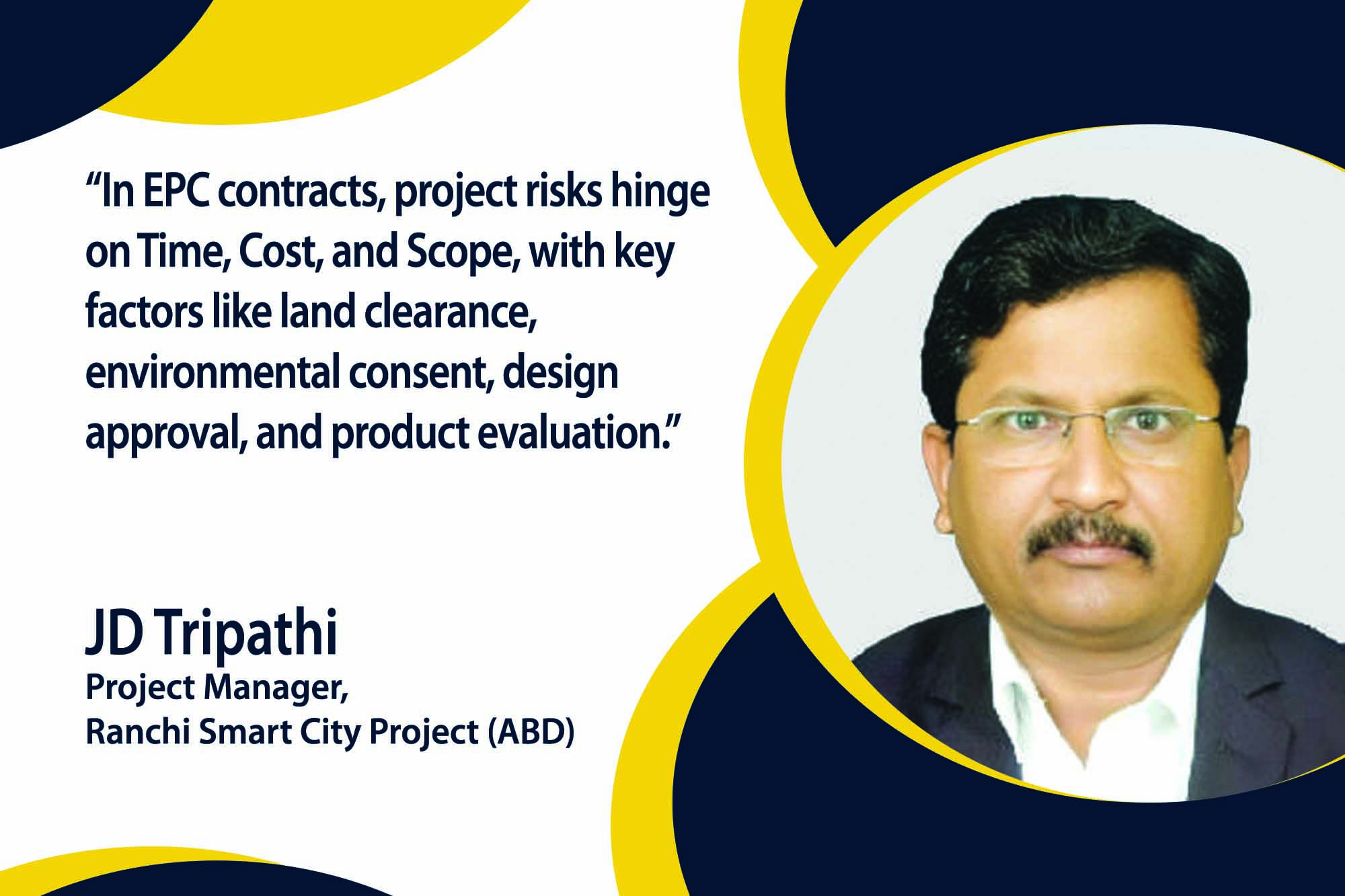This exclusive interview discusses the strategic method a top organisation uses to carry out Engineering, Procurement, and Construction (EPC) projects. Find out what makes a project execute well, from careful preparation to utilising modern tools.
How do you approach project management to ensure the successful execution of EPC Projects?
EPC terms of the contract are defined as Engineering, Procurement and Construction. All three terms play a definite role in the delivery of the successful execution of the project. Generally, the Engineering specified six months to complete detailed design / Procurement /Product evaluation/Design parameters and subsequent approval and vetting from the competent authority. Timely delivery of this phase would always help in the commencement and after executing and completing the EPC contract.
What role does digital technology play in monitoring and mitigating risks in project management, particularly within the context of EPC contracts?
Digital technology is instrumental in the daily monitoring of projects, with tools like EIP-Pragati/GIS providing essential insights. Building Information Modeling (BIM) is another valuable digital technology, although its suitability depends on the project’s nature. BIM facilitates the visualisation of leading and lagging activities, aiding in project planning and control regarding output and timeframe. In EPC contracts, Time, Cost, and Scope are paramount to defining project risks. Key risk factors include land clearance, environmental clearance for establishing consent, design approval, and product evaluation. These elements underscore the importance of meticulous planning and leveraging digital tools to mitigate project risks effectively.
How does your company incorporate sustainability considerations in EPC projects’ design and construction phases?
Sustainability considerations encompass the management of environmental factors, including the control of air, water, and noise pollution. Conducting biannual testing for these parameters is imperative, ensuring they remain within permissible limits. The key principles involve minimising resource usage and maximising their efficient utilisation. Additionally, controlling carbon emissions is achieved through adopting renewable energy sources, contributing to a holistic approach to sustainability.
Could you provide examples of regulatory requirements consistent across different types of contracts and how regional variations may impact compliance?
Specific regulatory requirements are consistent across all types of contracts, though discrepancies may arise based on regional variations. It’s essential to ensure compliance with these regulations before commencing project execution to avoid delays and legal complications. Additionally, leveraging the latest construction technology can significantly improve project outcomes. Still, its applicability depends on various factors such as the nature of the project, task requirements, evaluation of conditions, regional specifications, and specific activities involved. By carefully assessing these aspects, project teams can determine the most suitable technologies to enhance efficiency, productivity, and overall success.
How do you ensure high-quality standards throughout the engineering, procurement, and construction phases?
Ensuring high-quality standards in product delivery is imperative in today’s market. Several key factors contribute to maintaining these standards. Firstly, thorough product evaluation is essential to assess its suitability and performance. Aesthetically pleasing and functional design further enhances the product’s appeal and utility. Evaluating the quality of materials used is crucial, as it directly impacts the durability and longevity of the final product.
Additionally, rigorous initial and routine testing procedures help identify defects or shortcomings early in production. Employing appropriate construction methods in line with industry standards ensures the integrity and structural soundness of the product. Deploying skilled, experienced, and competent workforce members is vital to executing construction tasks efficiently and to the highest standards.
Maintaining meticulous testing records and engaging in third-party evaluations provide additional assurance regarding product quality. Adhering to standard construction practices further reinforces the commitment to delivering superior-quality products consistently. By prioritising these factors throughout the production process, companies can uphold high-quality standards and meet the expectations of discerning customers.
Cookie Consent
We use cookies to personalize your experience. By continuing to visit this website you agree to our Terms & Conditions, Privacy Policy and Cookie Policy.

















